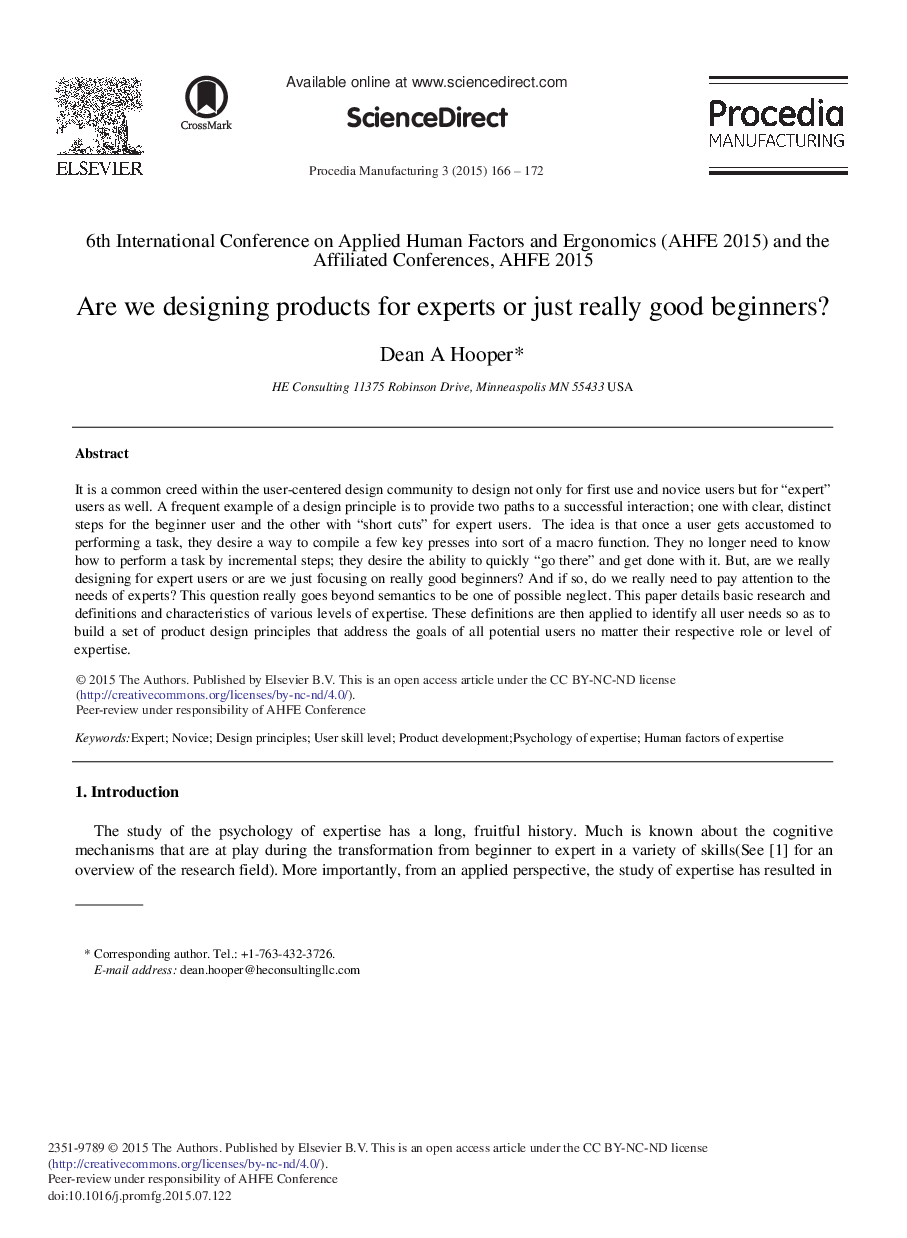| Article ID | Journal | Published Year | Pages | File Type |
|---|---|---|---|---|
| 1143781 | Procedia Manufacturing | 2015 | 7 Pages |
It is a common creed within the user-centered design community to design not only for first use and novice users but for “expert” users as well. A frequent example of a design principle is to provide two paths to a successful interaction; one with clear, distinct steps for the beginner user and the other with “short cuts” for expert users. The idea is that once a user gets accustomed to performing a task, they desire a way to compile a few key presses into sort of a macro function. They no longer need to know how to perform a task by incremental steps; they desire the ability to quickly “go there” and get done with it. But, are we really designing for expert users or are we just focusing on really good beginners? And if so, do we really need to pay attention to the needs of experts? This question really goes beyond semantics to be one of possible neglect. This paper details basic research and definitions and characteristics of various levels of expertise. These definitions are then applied to identify all user needs so as to build a set of product design principles that address the goals of all potential users no matter their respective role or level of expertise.
